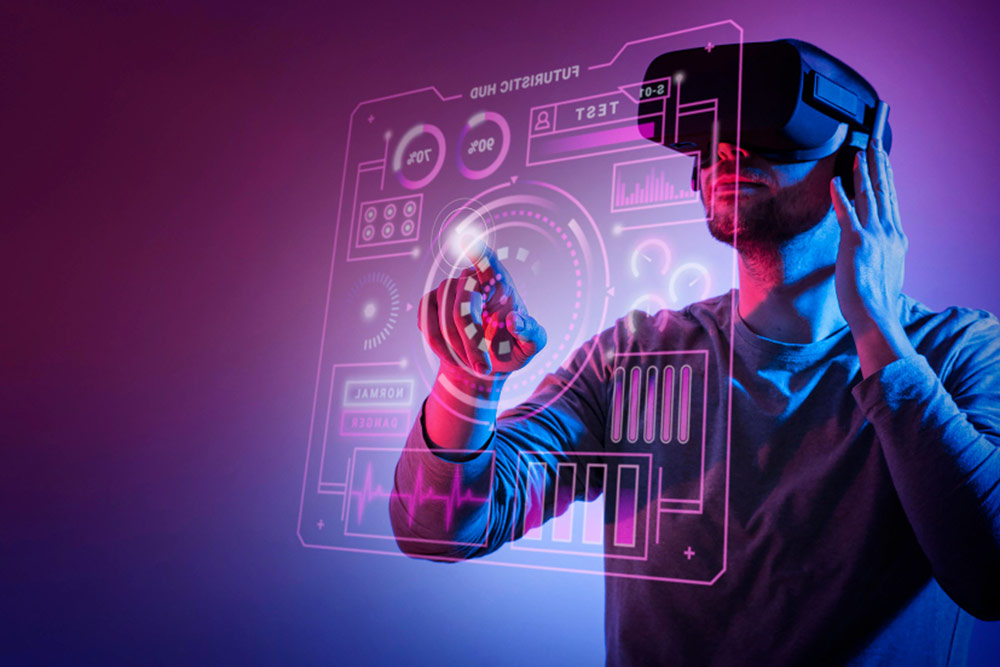The Evolving Metaverse: A Comprehensive Guide
1. What is the Metaverse?
The Metaverse is a collective virtual shared space, created by the convergence of virtually enhanced physical reality and physically persistent virtual space. It encompasses augmented reality (AR), virtual reality (VR), and the internet, allowing users to interact with a computer-generated environment and other users in real time. The term “metaverse” was coined by Neal Stephenson in his 1992 science fiction novel “Snow Crash,” describing a dystopian future where people, as avatars, interact in a three-dimensional virtual space.

The Metaverse is envisioned as an expansive, interconnected network of virtual worlds, akin to a fully immersive internet, where users can socialize, play, work, learn, and conduct commerce. It is not just a single platform or application but an entire ecosystem that spans various technologies and industries, facilitating seamless and engaging experiences across digital and physical realms.
2. Current State and Evolution
The Metaverse is rapidly evolving, driven by advancements in technology, increasing digital connectivity, and the growing popularity of immersive experiences. Currently, the Metaverse exists in various forms, including:
- Virtual Worlds: Platforms like Second Life, Minecraft, and Roblox provide users with virtual spaces to create, explore, and interact.
- Social VR: Applications like VRChat and Facebook Horizon allow users to socialize and collaborate in immersive virtual environments.
- AR Experiences: Mobile applications like Pokémon GO and Snapchat utilize AR to blend digital content with the physical world.
The evolution of the Metaverse is marked by significant milestones:
- Early 2000s: The rise of MMORPGs (Massively Multiplayer Online Role-Playing Games) like World of Warcraft laid the groundwork for social interactions in virtual spaces.
- 2010s: Advancements in VR and AR technology, such as the Oculus Rift and Microsoft HoloLens, made immersive experiences more accessible.
- Present Day: Increased investment in Metaverse-related technologies and infrastructure by tech giants like Facebook (rebranded as Meta), Google, and Microsoft signals a shift towards a more interconnected and immersive digital future.
3. Potential Applications
The Metaverse has the potential to revolutionize various sectors, offering novel applications and experiences:
- Entertainment: The Metaverse can transform gaming, live events, and media consumption. Virtual concerts, interactive movies, and immersive gaming experiences can provide unprecedented levels of engagement.
- Education: Virtual classrooms and training environments can offer immersive, interactive learning experiences, enhancing education accessibility and effectiveness.
- Work and Collaboration: The Metaverse can facilitate remote work and collaboration through virtual offices and meeting spaces, enabling employees to interact and collaborate as if they were physically present.
- Commerce: Virtual marketplaces and showrooms can revolutionize shopping experiences, allowing customers to explore and purchase products in a fully immersive environment.
- Healthcare: The Metaverse can provide virtual therapy sessions, medical training simulations, and remote consultations, improving access to healthcare services.
- Social Interaction: Social VR platforms can offer new ways to connect, socialize, and build communities, overcoming geographical and physical barriers.
4. Challenges & Considerations
Despite its vast potential, the Metaverse faces several challenges and considerations:
- Technical Limitations: The current state of technology imposes limitations on the quality and scalability of Metaverse experiences. High-speed internet, powerful computing resources, and advanced hardware are essential for seamless interactions.
- Privacy and Security: The Metaverse's interconnected nature raises concerns about data privacy and security. Ensuring the protection of personal information and preventing cyber threats are paramount.
- Digital Divide: Access to the Metaverse may be limited by socioeconomic factors, leading to a digital divide. Efforts must be made to ensure inclusivity and accessibility for all.
- Regulation and Governance: Establishing regulatory frameworks and governance structures to manage the Metaverse's development and usage is crucial. This includes addressing issues related to intellectual property, user rights, and digital ownership.
- Ethical Considerations: The Metaverse raises ethical questions about identity, virtual interactions, and the impact on real-life social dynamics. Ensuring ethical standards and addressing potential psychological effects are important.
5. The Future of the Metaverse
The future of the Metaverse holds immense promise, driven by continuous technological advancements and increased adoption. Key trends and developments include:
- Interoperability: Developing standardized protocols and frameworks to ensure seamless interaction between different virtual worlds and platforms will be essential for a truly interconnected Metaverse.
- AI and Machine Learning: AI-driven avatars, natural language processing, and predictive analytics can enhance user experiences and facilitate more realistic interactions.
- 5G and Beyond: The deployment of 5G and future communication technologies will provide the necessary bandwidth and low latency for high-quality, real-time Metaverse experiences.
- Decentralization: Blockchain technology and decentralized networks can enable secure, transparent, and user-controlled virtual environments, promoting trust and autonomy.
- Metaverse Economy: The emergence of a digital economy within the Metaverse, powered by cryptocurrencies and digital assets, can create new opportunities for trade, investment, and economic growth.
6. Some Case Studies Where Metaverse is Used
- Fortnite's Virtual Concerts: Epic Games' Fortnite has hosted several virtual concerts, including performances by artists like Travis Scott and Ariana Grande. These events attracted millions of attendees, showcasing the potential of the Metaverse for large-scale entertainment.
- Decentraland: Decentraland is a decentralized virtual world built on blockchain technology, allowing users to buy, sell, and develop virtual real estate. It exemplifies the integration of digital ownership and decentralized governance within the Metaverse.
- Microsoft Mesh: Microsoft Mesh is a mixed reality platform that enables holographic collaboration. It allows users to interact with 3D content and each other in real-time, enhancing remote work and collaboration.
7. Conclusion
The Metaverse represents a paradigm shift in how we interact with digital and physical worlds. It promises to revolutionize various aspects of life, from entertainment and education to commerce and social interaction. However, realizing its full potential requires addressing technical, ethical, and regulatory challenges. As technology continues to evolve, the Metaverse will become an integral part of our lives, offering boundless opportunities for innovation and connection. By embracing this transformative vision, we can create a more immersive, inclusive, and interconnected future.
